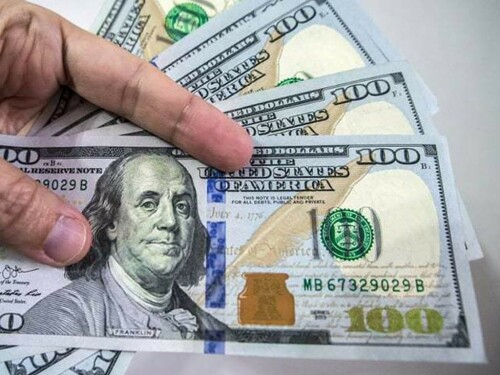Pakistani Rupee’s Performance in Inter-Bank Trading
On Wednesday, the Pakistani rupee experienced a slight decrease against the US dollar during intra-day trading in the inter-bank market.
At approximately 9:49 am, the local currency was trading at 280.83 against the US dollar, reflecting a decline of Re0.06 compared to the previous day’s closing rate.
On the preceding day, Tuesday, the rupee concluded trading at 280.77 against the US dollar.
Global Market Influences
On the international stage, the US dollar initially surged but later stabilized on Wednesday. This stabilization occurred after President Donald Trump softened his stance on potentially dismissing Federal Reserve Chair Jerome Powell, which provided relief to investors. Additionally, growing optimism surrounding trade agreements bolstered market sentiment.
Throughout the week, markets have been concerned about potential threats to the Fed’s independence, particularly in light of repeated criticisms from Trump regarding the Fed’s decision not to lower interest rates since he assumed office in January.
However, late on Tuesday, Trump appeared to step back from his previous stance.
“I have no intention of firing him,” Trump stated to reporters at the Oval Office on Tuesday. “I would like to see him be a little more active in terms of his idea to lower interest rates.”
This statement led to a rapid increase in the dollar’s value at the beginning of Asian trading hours, although it stabilized by mid-morning.
The dollar’s value increased by over 1% against the yen, reaching 143.21 in early trading, and was last trading slightly higher at 141.77. Against the Swiss franc, the dollar saw a 0.29% increase to 0.8216, after an earlier jump of over 1%.
The euro was valued at $1.14, while sterling decreased by 0.17% to $1.3311.
On Tuesday, the dollar had been trading near multi-year lows against both the euro and the Swiss franc, while the yen reached a seven-month high. This was driven by investors selling off U.S. assets due to concerns about trade tensions and Trump’s criticism of the Fed.
Impact of Oil Prices
Oil prices, which are a significant indicator of currency parity, increased by nearly 1% in early trading on Wednesday. This extended gains from the previous day as investors considered a new round of sanctions on Iran, a decrease in U.S. crude stocks, and a more moderate tone from Donald Trump regarding the Federal Reserve.
The market found reassurance after Trump’s Tuesday announcement that he would not fire Fed Chair Jerome Powell, following days of heightened criticism for not lowering interest rates. Trump also suggested the possibility of reducing tariffs on China.
Brent crude futures increased by 61 cents, or 0.9%, to $68.05 a barrel at 0007 GMT, while U.S. West Texas Intermediate crude was at $64.27 a barrel, up 60 cents, or 0.94%.
The U.S. imposed new sanctions targeting Iranian liquefied petroleum gas and crude oil shipping magnate, Seyed Asadoollah Emamjomeh, and his corporate network on Tuesday.



Comments (0)
No comments yet. Be the first to comment!
Leave a Comment